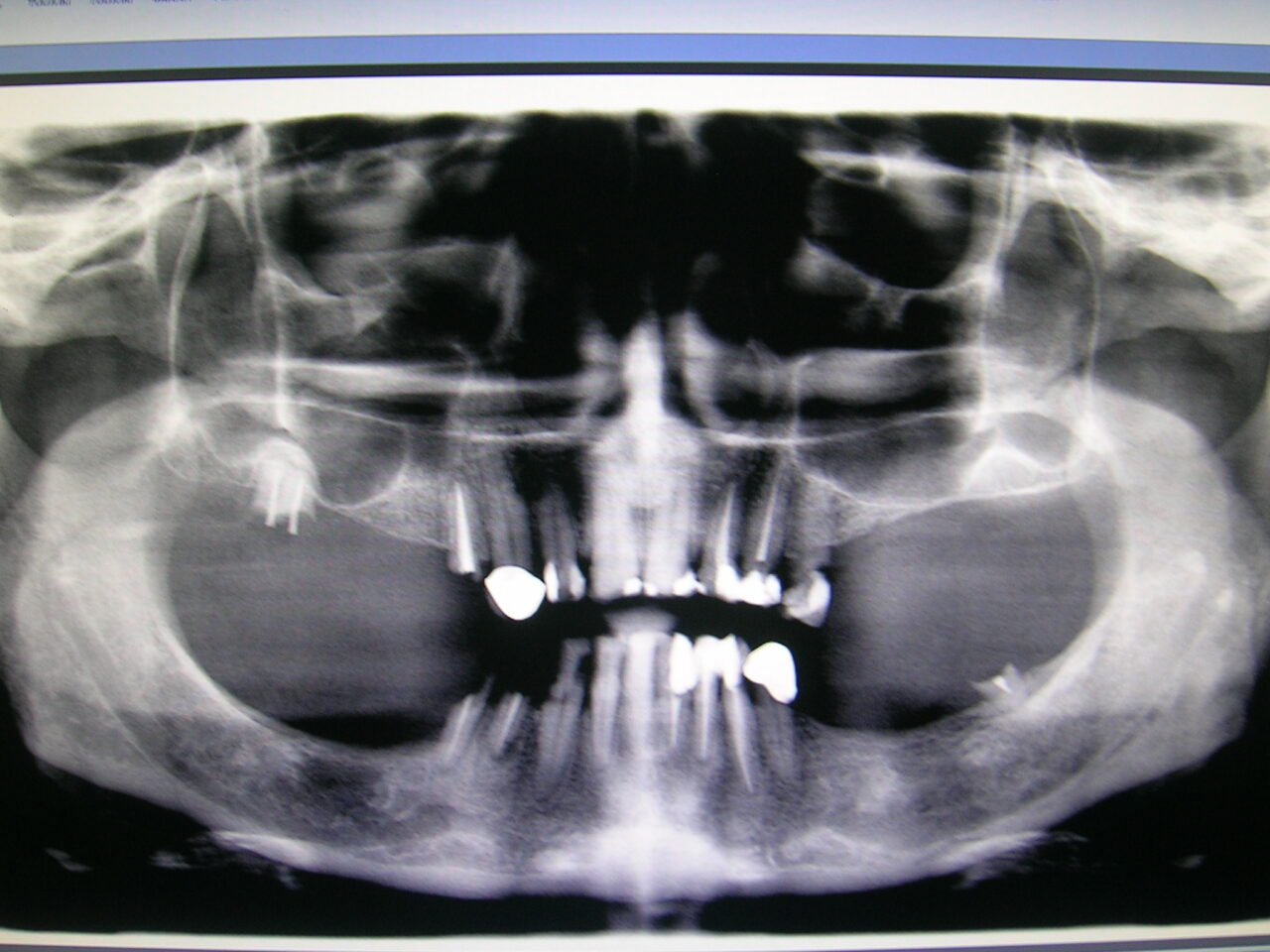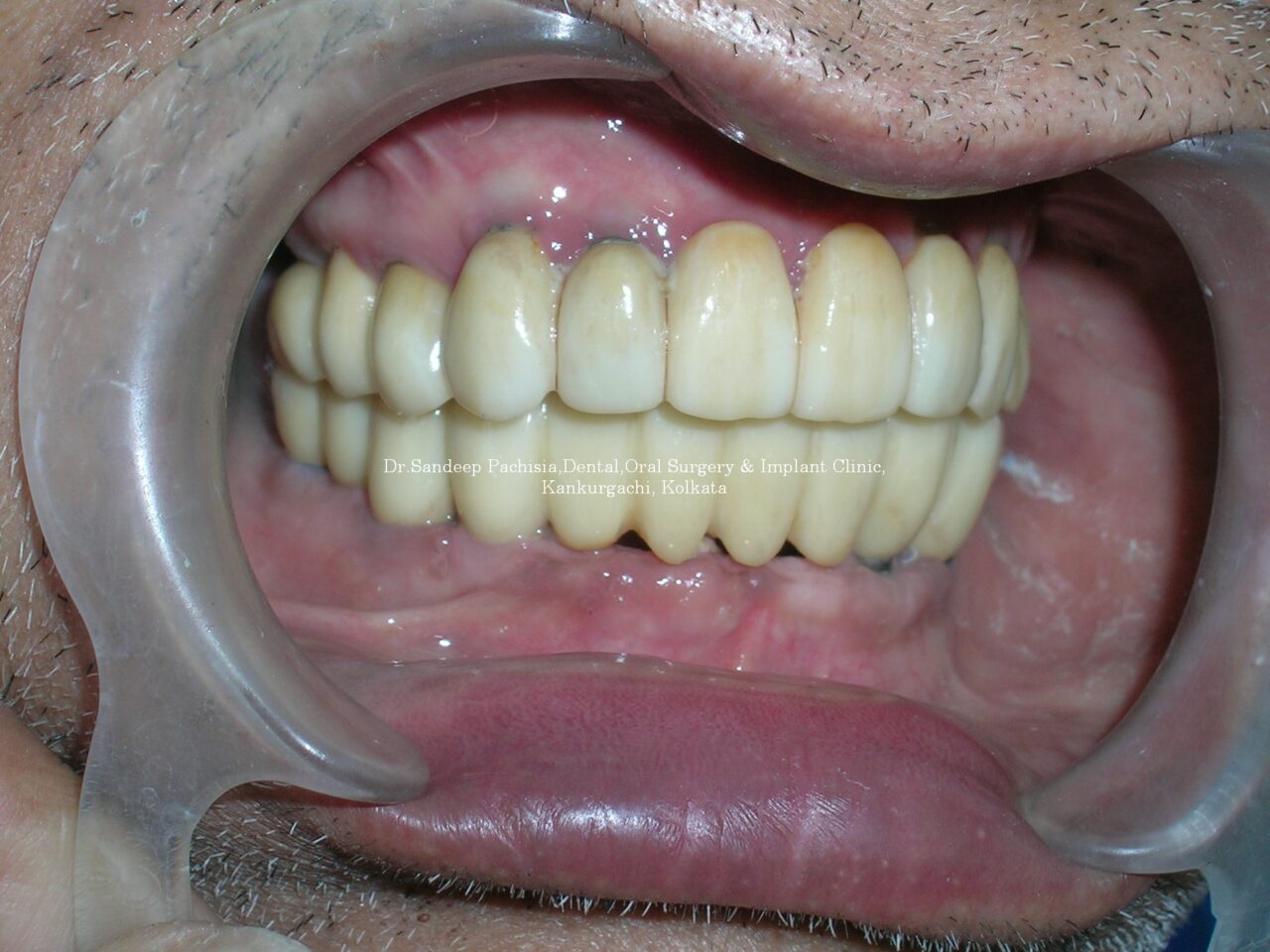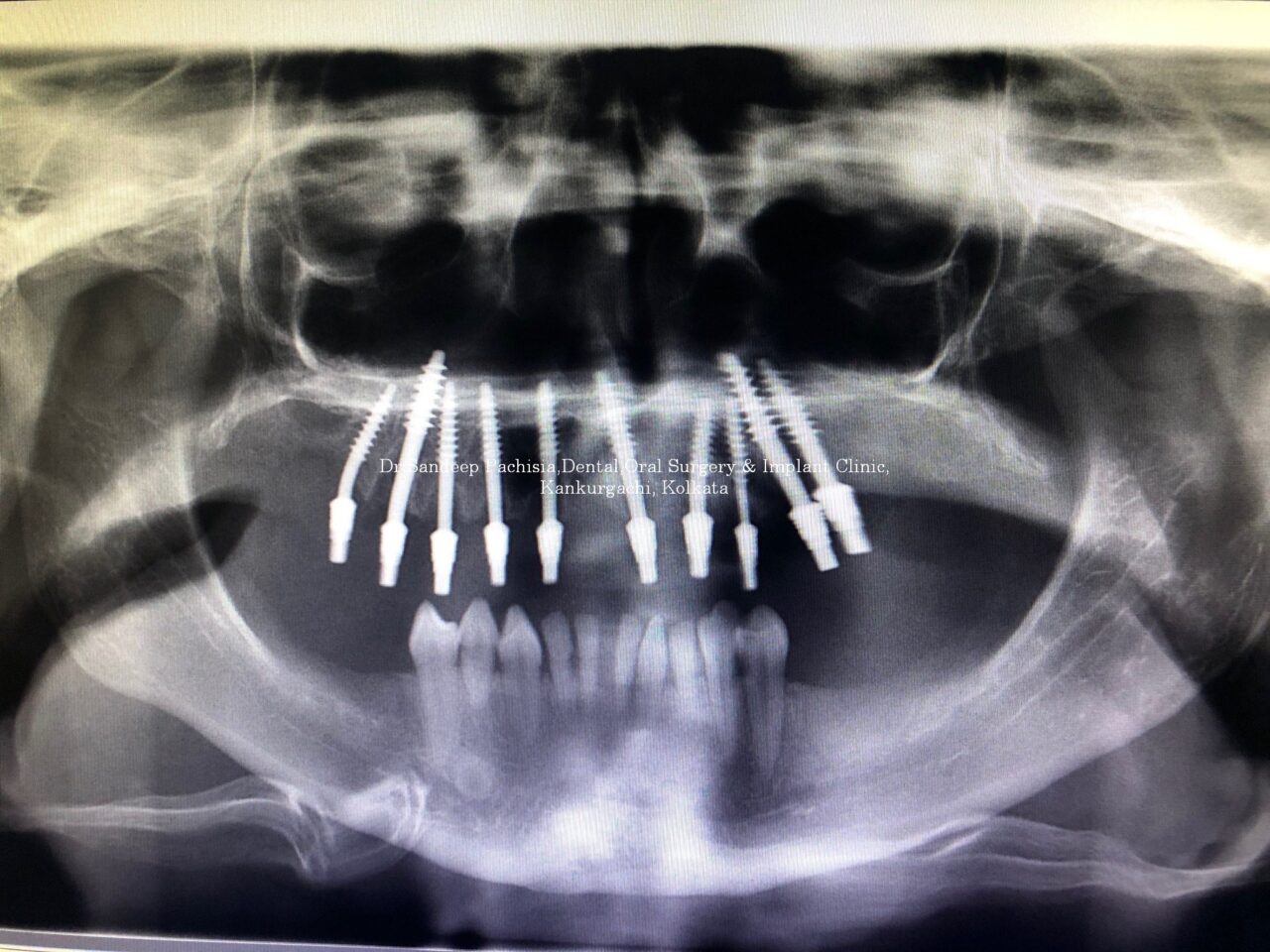Full Mouth Implants
Case1








Case 2




Implants with Bone Grafting ( Direct Sinus Lift)






Individual Implant








Immediate Implants





What are dental implants?
Dental implants are simply small titanium cylinders placed into the jawbone to support replacement teeth. These titanium implants fuse with your bone and provide a permanent anchorage for a prosthetic reconstruction which looks and feels like a natural tooth.
Advantages of Dental Implants Over Dentures or a Bridge
Every way you look at it, dental implants are a better solution to the problem of missing teeth.
· Esthetic: Dental implants look and feel like your own teeth! Since dental implants integrate into the structure of your bone, they prevent bone loss and gum recession that often accompany bridgework and dentures. No one will ever know that you have an artificial tooth.
· Tooth-saving: Dental implants don’t sacrifice the structure of your adjacent teeth as a bridgework, because neighboring teeth are not altered to support the implant. More of your own teeth are left untouched, a significant long-term benefit to your oral health!
· Confidence: Dental implants will allow you to once again speak and eat with comfort and confidence! They’ll allow you to say goodbye to worries about displaced dentures and messy denture adhesives.
· Reliable: The success rate of dental implants is highly predictable. They are considered an excellent option for tooth replacement.

How are dental implants placed?
Dental implants are usually completed in two phases:
- Phase #1 is the actual dental implant placement, a process generally performed in the clinic under local anesthesia. The implants are placed into the jawbone and left for 3 to 6 months while osseointegration (bonding to bone) takes place. This helps ensure a strong, solid foundation for replacement teeth. During this time, temporary bridges or dentures may be used to minimize any cosmetic or chewing inconvenience.
- Phase #2 involves creating and attaching the new tooth or teeth to the anchored dental implant(s) in your jaw. Dental implants can replace a single tooth, several teeth or complete dentures.
Additional Procedures
A key to implant success is the quantity and quality of the bone where the implant is to be placed. If there is insufficient bone or if the bone quality is poor, various bone enhancing procedures may have to be performed prior to the implant placement. These include procedures such as bone-grafting, bone-substitute grafting, Guided Tissue Regeneration (GTR), sinus-lift & ridge-modification procedures. “Inferior alveolar nerve trans-positioning” may have to be employed to move a nerve that may be in the way.
Sinus Lift / Augmentation: The upper back jaw has traditionally been one of the most difficult areas to successfully place dental implants due to insufficient bone quantity and quality. The close proximity to the maxillary sinus is one of the factors leading to this problem. Sinus augmentation can help correct this problem by raising the sinus floor thereby providing provision for increased bone height providing an ideal scenario for placement of dental implants.
Ridge Modification: Deformities in the upper or lower jaw can leave you with inadequate bone to place dental implants. To correct the problem, the gum is lifted away from the ridge to expose the bony defect. The defect is then filled with bone or bone substitute to build up the ridge. Ridge modification has been shown to greatly improve appearance and increase your chances for successful implants that can last for years to come.
Are You a Candidate for Dental Implants?
The ideal candidate for a dental implant is in good general and oral health. Adequate bone in your jaw is required to support the implant, and the best candidates have healthy gum tissues that are free of periodontal disease.
It is extremely important for the patient to undergo a comprehensive examination to determine if he or she is a good candidate for the procedure. The oral surgeon will evaluate the patient’s medical and dental history. X-rays and sometimes a CT scan will have to be carried out to evaluate the condition of the jawbones including the texture and quality of bone available for implant placement. Radiographic imaging also helps in assessing the location of adjacent nerves and sinuses. Medical problems such as uncontrolled diabetes mellitus will certainly cause failure of dental implants.
Meticulous treatment planning is extremely important for undergoing dental implant procedures.
What Can I Expect After Implant Treatment?
As you already aware, your teeth require conscientious home care as well as regular dental visits. Dental implants are like your own teeth and will require the same intensity of care. In order to keep your implant clean and plaque-free, brushing and flossing still apply!
After treatment, periodic follow-up visits will be scheduled to monitor your implant, teeth and gums to ensure they are healthy and functional.